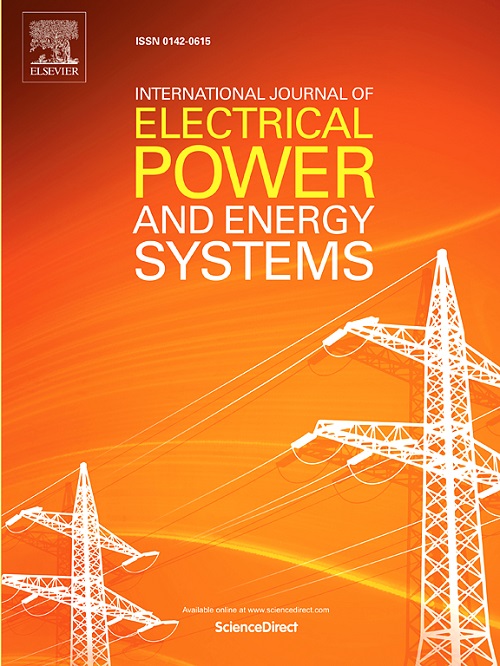Joint optimization of location and topology of multi-terminal soft open point in distribution networks
IF 5
2区 工程技术
Q1 ENGINEERING, ELECTRICAL & ELECTRONIC
International Journal of Electrical Power & Energy Systems
Pub Date : 2025-05-15
DOI:10.1016/j.ijepes.2025.110721
引用次数: 0
Abstract
The popularization of renewable energy has led to problems including excessive current and voltage violations in distribution networks. Soft open point (SOP) enables real-time continuous active and reactive power regulation to alleviate these problems. However, how many terminals of a SOP should be set, and which feeders should be interconnected with these terminals is a crucial issue. To address this issue and fully utilize the performance of SOP, this paper conducts a comparative study of SOP with different topologies. First, a nonlinear programming (NLP) model to reveal the effect of multi-terminal SOP (MTSOP) in minimizing system losses and voltage deviation is developed. Second, to facilitate the solution, the NLP model is transformed into a second-order cone programming (SOCP) model based on cone relaxation. Finally, validation on the IEEE 33-, 69- and 141-node systems is conducted. MTSOP can reduce the total losses of IEEE 33-, 69- and 141-node systems by up to 23.54 %, 37.98 %, and 28.90 %, respectively. Although SOPs with a large number of terminals have excellent performance, they are difficult to gain an advantage in feasibility. Therefore, it is not necessarily better to have more terminals in an MTSOP which should be determined based on the characteristics of distribution networks.
配电网多终端软开点位置与拓扑的联合优化
随着可再生能源的普及,配电网出现了电流过大、电压超标等问题。软开点(SOP)实现实时连续有功和无功调节,以缓解这些问题。然而,一个SOP应该设置多少个终端,哪些馈线应该与这些终端互连是一个关键问题。为了解决这一问题,充分利用SOP的性能,本文对不同拓扑的SOP进行了比较研究。首先,建立了一个非线性规划(NLP)模型,揭示了多端SOP (MTSOP)在最小化系统损耗和电压偏差方面的作用。其次,为了便于求解,将NLP模型转化为基于锥松弛的二阶锥规划(SOCP)模型。最后,在IEEE 33、69和141节点系统上进行了验证。MTSOP可以将IEEE 33、69和141节点系统的总损耗分别降低23.54%、37.98%和28.90%。终端数量多的sop虽然性能优异,但在可行性上难以取得优势。因此,MTSOP中的终端数量不一定越多越好,应该根据配电网的特点来确定。
本文章由计算机程序翻译,如有差异,请以英文原文为准。
求助全文
约1分钟内获得全文
求助全文
来源期刊
CiteScore
12.10
自引率
17.30%
发文量
1022
审稿时长
51 days
期刊介绍:
The journal covers theoretical developments in electrical power and energy systems and their applications. The coverage embraces: generation and network planning; reliability; long and short term operation; expert systems; neural networks; object oriented systems; system control centres; database and information systems; stock and parameter estimation; system security and adequacy; network theory, modelling and computation; small and large system dynamics; dynamic model identification; on-line control including load and switching control; protection; distribution systems; energy economics; impact of non-conventional systems; and man-machine interfaces.
As well as original research papers, the journal publishes short contributions, book reviews and conference reports. All papers are peer-reviewed by at least two referees.

 求助内容:
求助内容: 应助结果提醒方式:
应助结果提醒方式:


